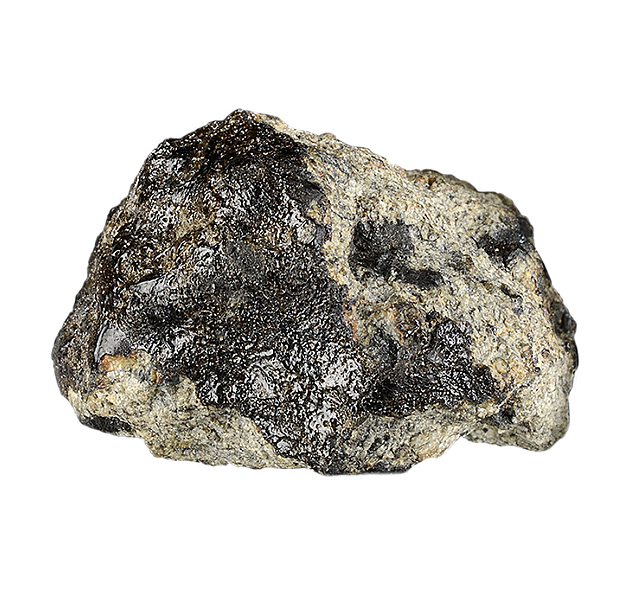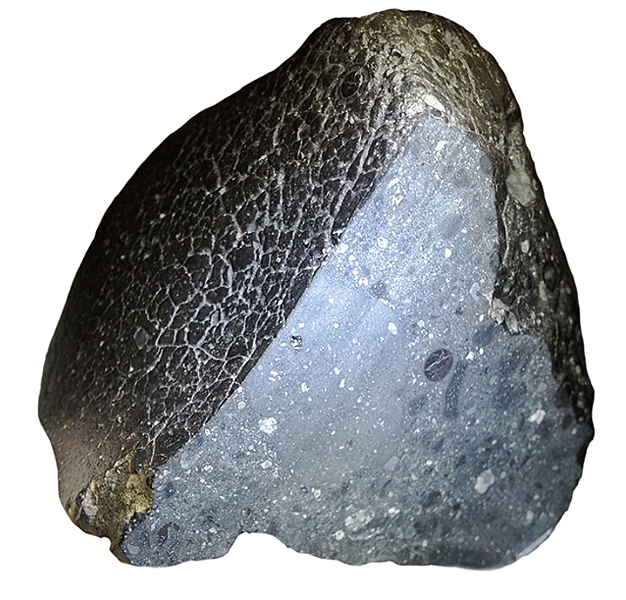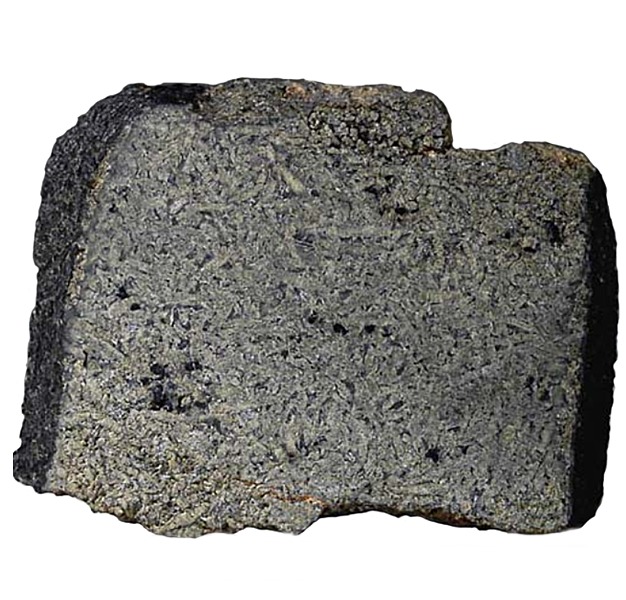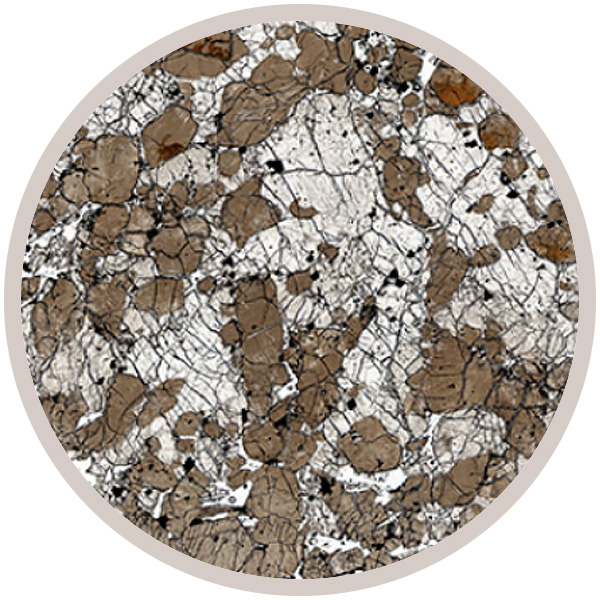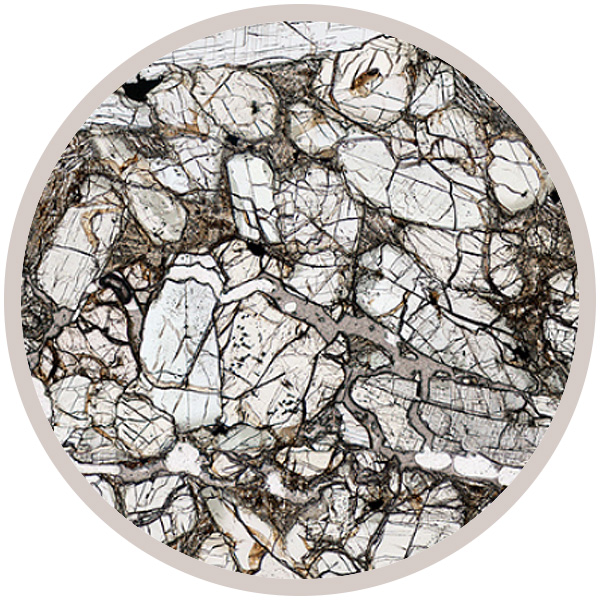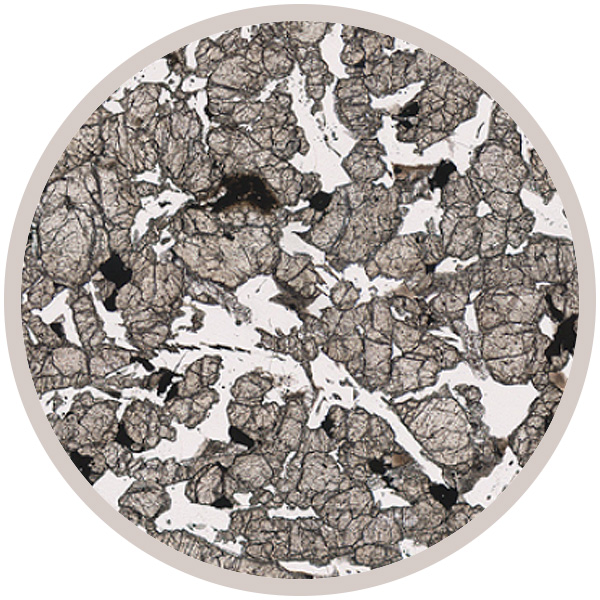
Fact sheet
One of the best studied basaltic shergottites.
The meteorite landed about 10 feet away from a farmer who was trying to chase crows from his corn field in Nigeria on an October afternoon in 1962. The farmer heard a huge explosion and felt the pressure wave. The meteorite weighs around 18 kg and is the largest single individual Martian meteorite ever found.
The thin section here is mounted in a mounting medium with embedded sand grains, so the quartz in the periphery of the thin section is from Earth.
This collection of meteorites includes Shergottites, Nakhlites and Chassignites (or SNC meteorites) which originate from the surface of the planet Mars.
They carry unique signals of the surface of the planet that allows scientists to study the composition and age of Martian rocks. The collection includes a sample of the famous ALH84001 meteorite, evidence from which was used in 1996 to begin the debate of 'life on Mars?'.
Sample details

